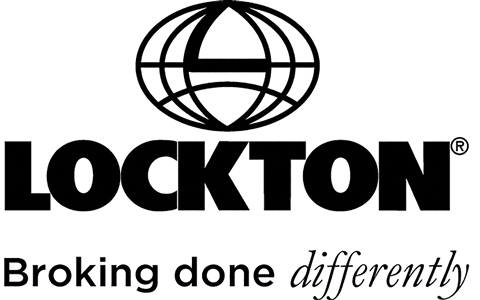Over the past 10 years, the real estate lending market has increasingly focused on insurance, both in relation to the adequacy of the borrower’s insurance arrangements and ways in which insurance can be used in a variety of situations to protect lenders’ interests.

Over the past 10 years, the real estate lending market has increasingly focused on insurance, both in relation to the adequacy of the borrower’s insurance arrangements and ways in which insurance can be used in a variety of situations to protect lenders’ interests.
For instance, what happens if a property is damaged and a borrower’s insurance company refuses to pay out? The borrower may be left with an unlettable building and be unable to make repayments to the lender. What’s more, the value of the property may have been significantly diminished, meaning that the lender would be out of pocket even if the building were to be repossessed.
More nefariously, a borrower may make a significant claim but fail either to use the funds received from insurers to reinstate a damaged property or continue repayments to the lender.
Finally, what happens if a borrower’s insurance policy is cancelled, for whatever reason, and a property sustains significant damage? Both the borrower and the lender will be left out of pocket.
“What happens if a borrower’s insurance policy is cancelled, for whatever reason, and a property sustains significant damage? Both the borrower and the lender will be left out of pocket”
Lenders have sought to manage these risks through the insurance provisions included within their facility agreements, usually utilising the Loan Market Association’s insurance requirements template, which requires specific levels of cover to be in place, together with specific protection for the lenders, such as Composite Insured and First Loss Payee.
Historically lenders have relied on a letter provided by the borrower’s insurance broker confirming that the borrower’s insurances comply with the insurance requirements. However, there are a number of issues with this approach, not least that brokers naturally act in the best interest of their client – the borrower – and the increased focus of insurance brokers to caveat their confirmation letter that they accept no liability for the content of the letter/that liability for the contents of the letter is restricted to a very low amount.
As a result, the Lockton Real Estate and Construction team, which is made up of more than 100 insurance professionals, has responded to the need for independent and experienced insurance brokers who are appointed by lenders and act in their best interests. For more than three years, we have provided services for lenders, which has enabled them to properly manage their risks.
Lockton due diligence/independent adviser service
Members of our due diligence practice act as independent insurance advisers to lenders, providing services for both construction and real estate loans including general advice on an ad-hoc or formal basis and training on insurance-related topics. In addition, we provide advice on insurance clauses being used in loan agreements and review a borrower’s insurance arrangements on behalf of lenders.
We produce bespoke reports to our lender clients summarising whether the insurance provisions within the facility agreement have been met. Typically, the reports use a ‘RAG’ rating for clarity, whereby red indicates that arrangements are unsatisfactory, amber that they are not quite as requested by the lender but may be considered to be sufficient and green that everything is in order.
By utilising our due diligence service, there will typically be a cost saving in solicitors’ fees for both lenders and borrowers, as the level of work they need to undertake in relation to insurance is vastly reduced and often removed.

In addition, with our expert team being fully versed in the insurance language used, and knowledgeable about what insurers will agree in the insurance market, especially where we are authorised to communicate directly with the borrower’s insurance brokers, our involvement can vastly improve the speed with which compliance with lenders’ insurance requirements can be achieved.
We always work with the borrower and their broker, maintaining excellent professional relationships throughout. Lenders usually recharge our fees back to their borrower, with the total cost being typically lower than would have been the case had solicitors undertaken the insurance due diligence communications.
All parties benefit from: cost reductions (compared with solicitors undertaking these tasks); time savings (we know the language and what the insurance market will agree); expert advice to all parties on how the best position can be reached; and additional cover(s), which may be available to lenders to cover any remaining ‘gaps’ in compliance (such as where a third party arranges insurance and will not agree all requirements), allowing lenders to be sufficiently comfortable to proceed with the loan.
Lenders’ insurance cover(s) – property damage
Sometimes a borrower cannot comply with the insurance requirements in a facility agreement (for example where they are not responsible for the insurance and these requirements may not be agreed by the party responsible for insuring the property, such as the freeholder or superior landlord). In these circumstances, contingency cover for property damage is a valuable alternative for lenders as protection against the financial risks they would otherwise be exposed to. The cover is as valuable to a borrower, as the lender may be unable or unwilling to provide a loan without the prescribed level of insurance protection. Cover we arrange for lenders includes:
- Loan value protection. This is a blanket policy providing contingent cover for all loans where the lender is unaware the borrower has failed to insure their property correctly or their policy is invalidated or not renewed. In the event that serious damage occurs to a property (for example a fire), and there is no insurance cover in place to reinstate it, the borrower may not have sufficient funds to reinstate the property and/or maintain their loan repayments. The property may be repossessed by lenders and then sold for a value lower than the outstanding loan value. This policy provides cover for the deficit between the capital value of the loan and the sale proceeds.
- Financial interest protection. This product is used by lenders where they are aware that their borrower(s) has not arranged insurance cover for their property or that the borrower has allowed their insurance arrangements to lapse. Consequently, lenders arrange for their interest in the property to be protected by insurance, so cover is arranged for the limit of the outstanding loan (which is the limit of their financial interest in the property).
- Properties in possession. Where a lender is in possession of a property, they will be required to arrange insurance for the property, typically as a result of taking on the borrower’s responsibilities under a lease. In this instance, the insurance cover relates to the full market value of the property in the same way that the borrower would or should have done previously, in addition to property owners’ liability and loss of rent/service charge.
Lenders’ contingency cover – block defective title
When a new loan is agreed, there are a number of administrative tasks that are undertaken by lenders and their legal team, including searches for each of the properties that will form part of the security under the loan. Once requested, searches can take up to eight weeks and when received only relate to the position at the point of time that the search was undertaken – the position could in theory change within days of the result being produced. Typically, searches older than three months are no longer considered to be reliable, so if a loan is placed on hold for this period of time lenders will typically request new searches.
A time-saving alternative to requesting searches is a block defective title policy, which can be put in place by lenders to cover all of their loans. Cover will indemnify the lender only in relation to any matters that would have been identified had a standard search been carried out.
This type of policy is arranged for the benefit of the lender only, with cover being limited to the value of their interest under the facility agreement. Lenders are generally required to make monthly declarations of each new loan and the value of their interest. This information is used to calculate the premium due, which can be lower than the costs of the searches for larger portfolios.
Title policies
Where a risk is identified, for example as a result of a search or due diligence, cover may be arranged for these specific risks. Cover can be arranged for the lender only, including risks such as the absence of lender protections in a lease (forfeiture of lease) or can be arranged for the benefit of the lender and the borrower.
In addition to legal indemnity covers, Lockton’s specialist contingent and special risks practice arranges insurance for a variety of other risks such as environmental impairment liability, judicial review and rights of light.
• World’s largest privately owned global insurance broker
• More than 50,000 clients
• 90-plus offices worldwide with clients in over 125 countries
• $1.57bn revenues
• 96% client retention rate
• More than 7,000 associates
• More than $5m donated to local groups by associates around the globe
About Lockton Real Estate & Construction
• 98% client retention
• 2,266 ‘asset’ clients; 83,824 claims registered; 32 countries where client assets are insured; 10 currencies processed through ‘asset’; 1,892 online ‘asset’ portal users
• 112 partners and associates with specialist real estate and construction experience
• Bespoke PRS and student accommodation offering
• Dedicated Contingent & Special Risks and Due Diligence practices
• Arranged cover for sums insured of more than £165bn for global real estate assets
• 26 partners and associates who have worked together for over 10 years, creating an established, consistent and passionate team

Topics
PW Perspectives Supplement Winter 2018
- 1
- 2
- 3
- 4
- 5
- 6
- 7
- 8
- 9
- 10
- 11
 Currently reading
Currently readingHow Lockton helps lenders to manage risk effectively
- 12
- 13
- 14











































No comments yet